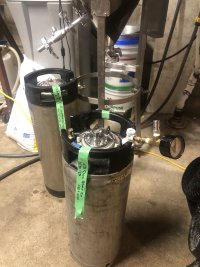Anti-Hoppist
Active Member
I'm thinking about a DIY kegerator, and am thinking: could I, after primary, put Sugar in the fermenter for carbonation and once carbonated put the fermenter, with yeast and all, in the kegerator? One could surely find a way to use the airlock hole to fit a tap line that doesn't use CO2, or put the fermenter a bit high and serve directly from the spigot.
Sounds nice, but is it also reasonable?
Sounds nice, but is it also reasonable?
Last edited:





